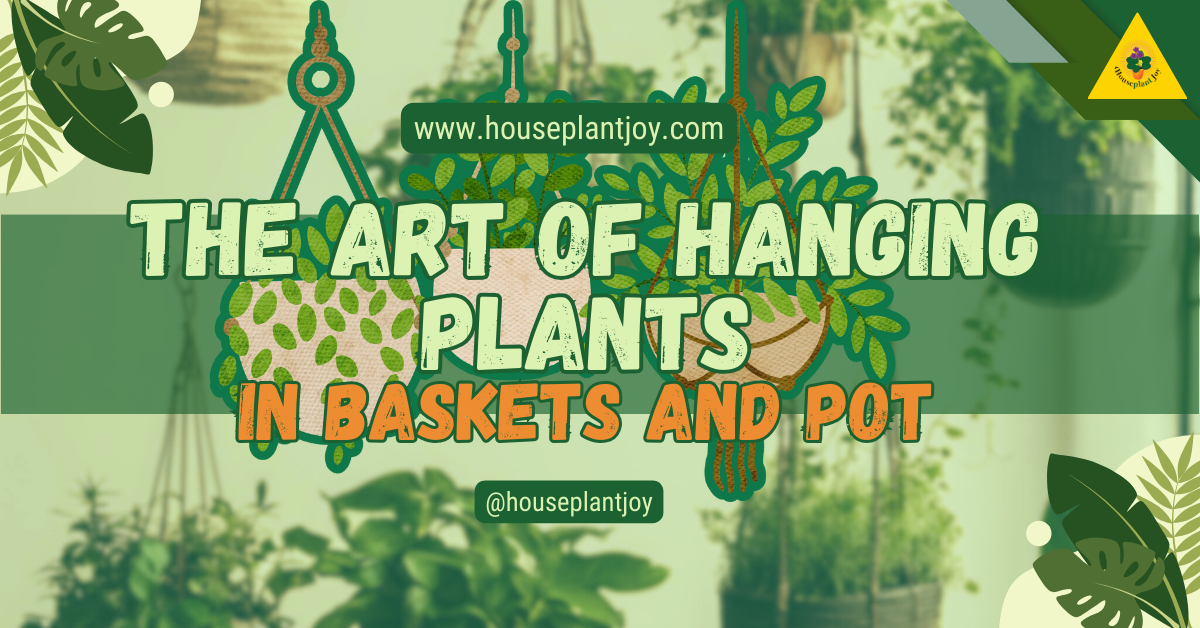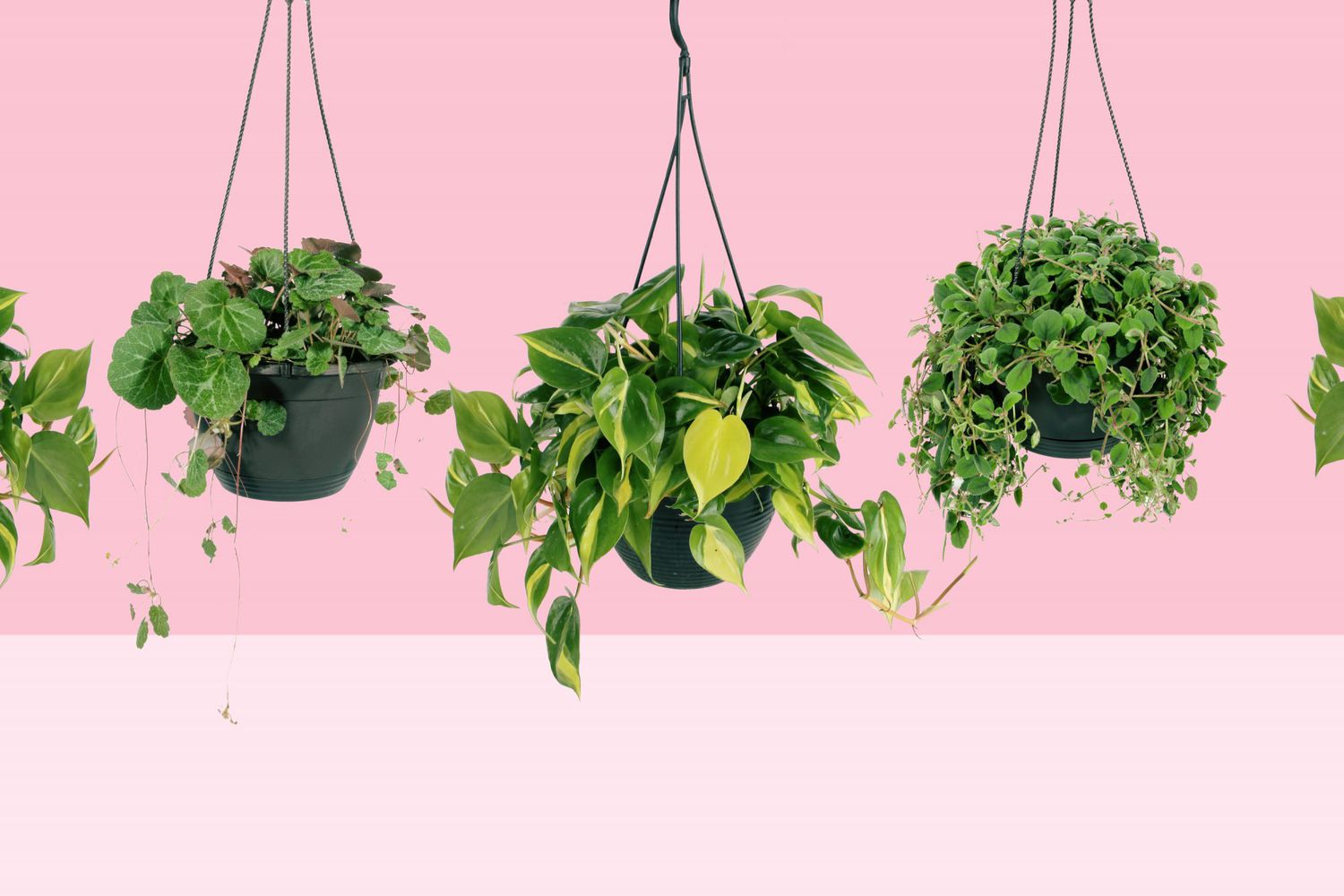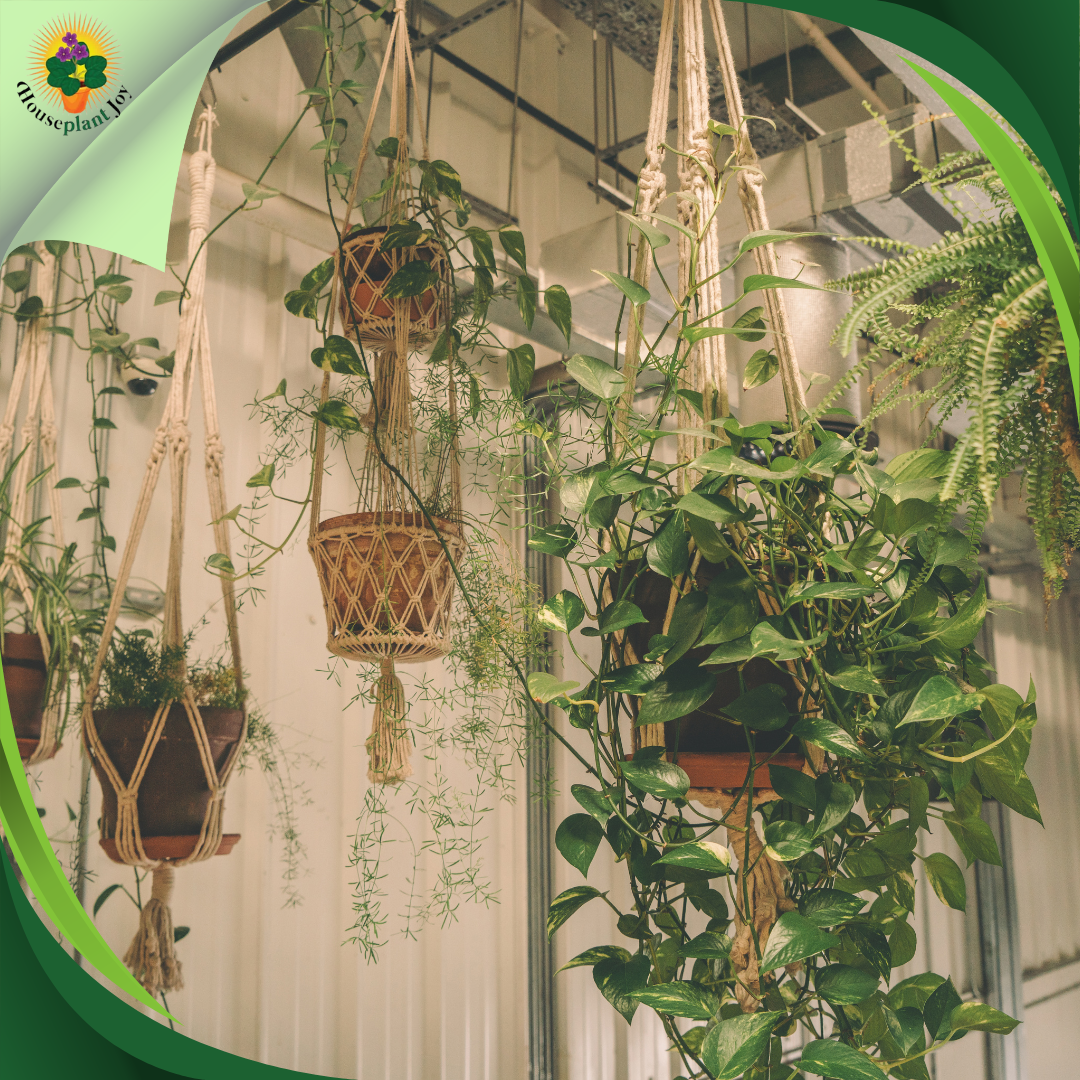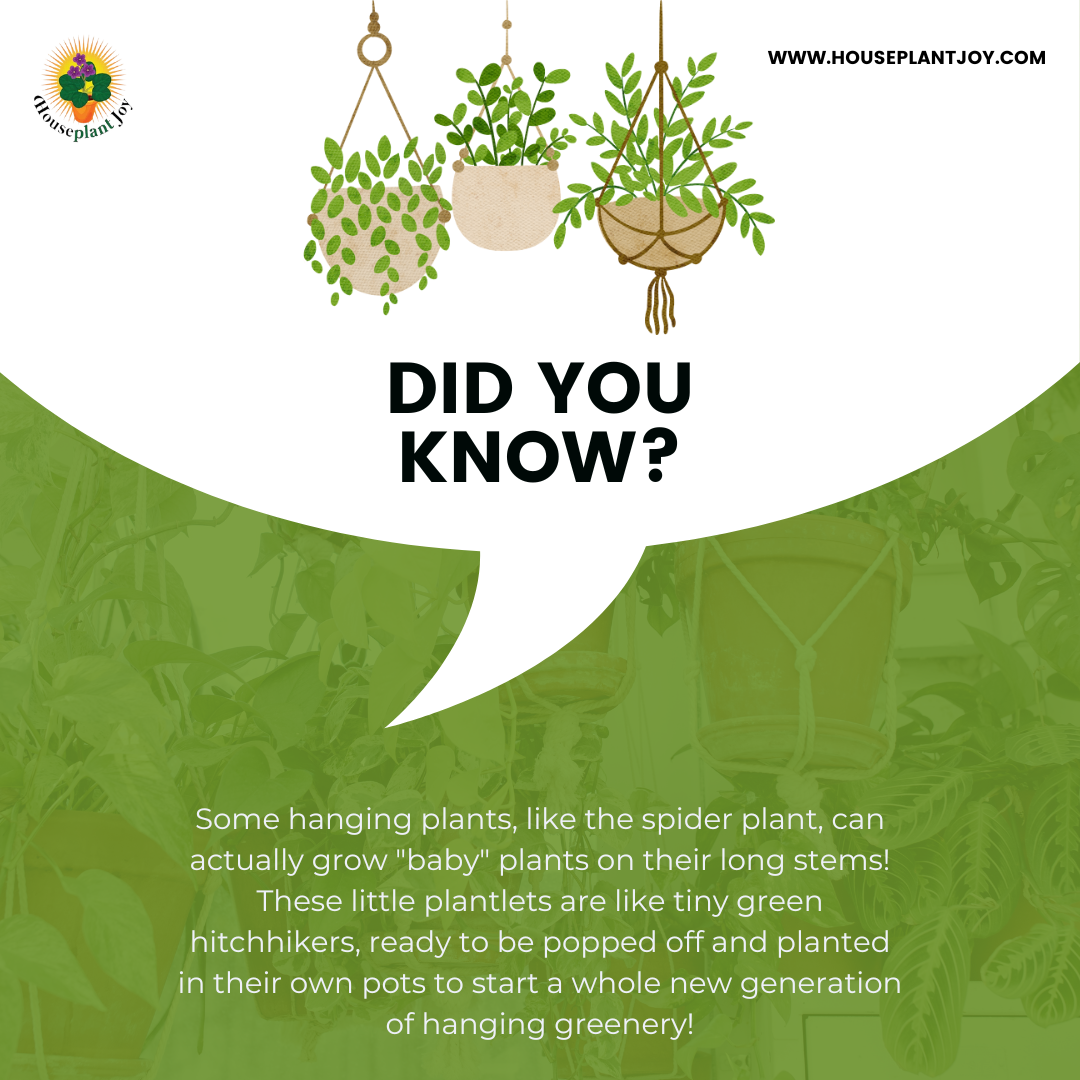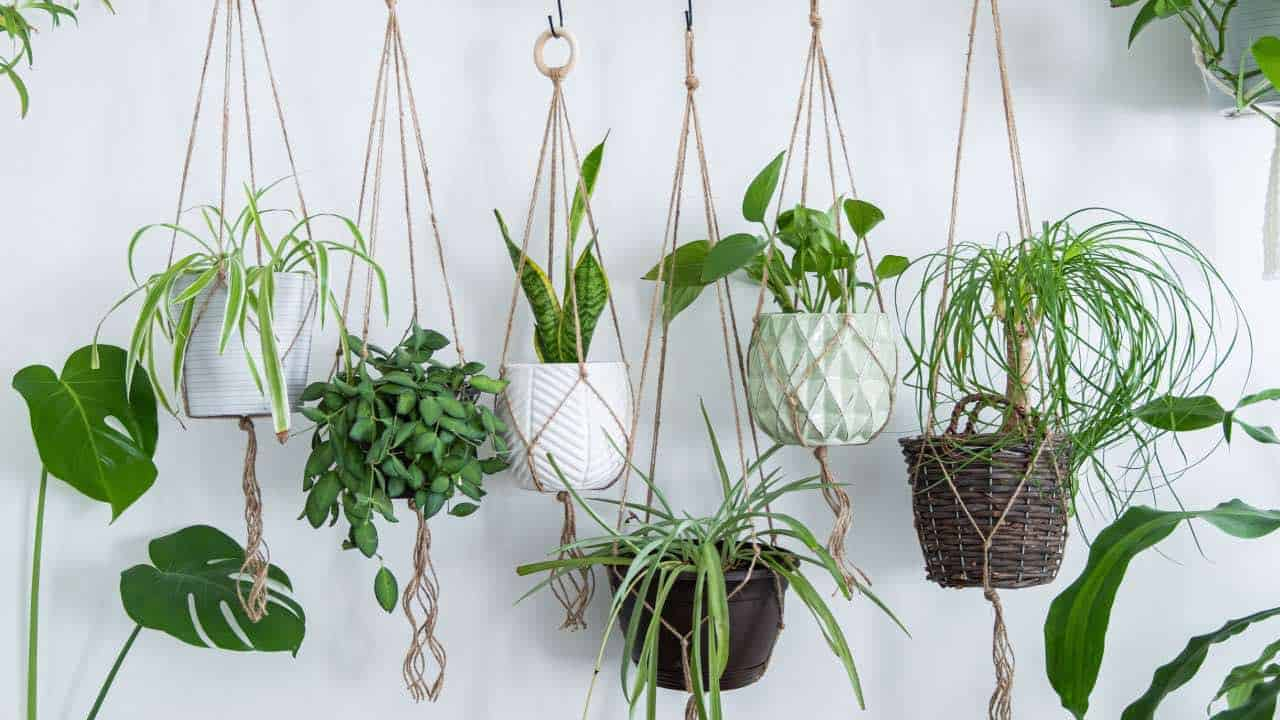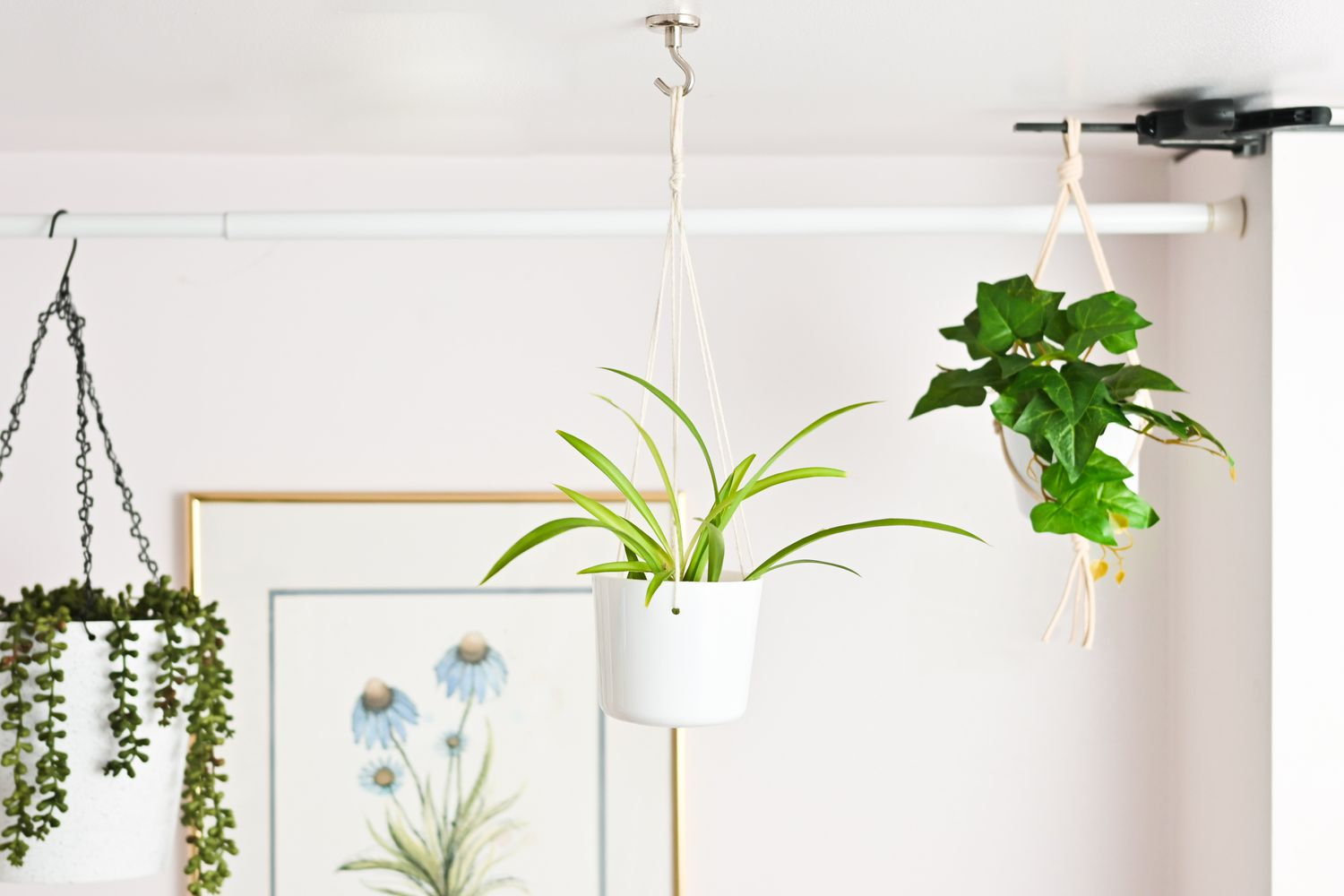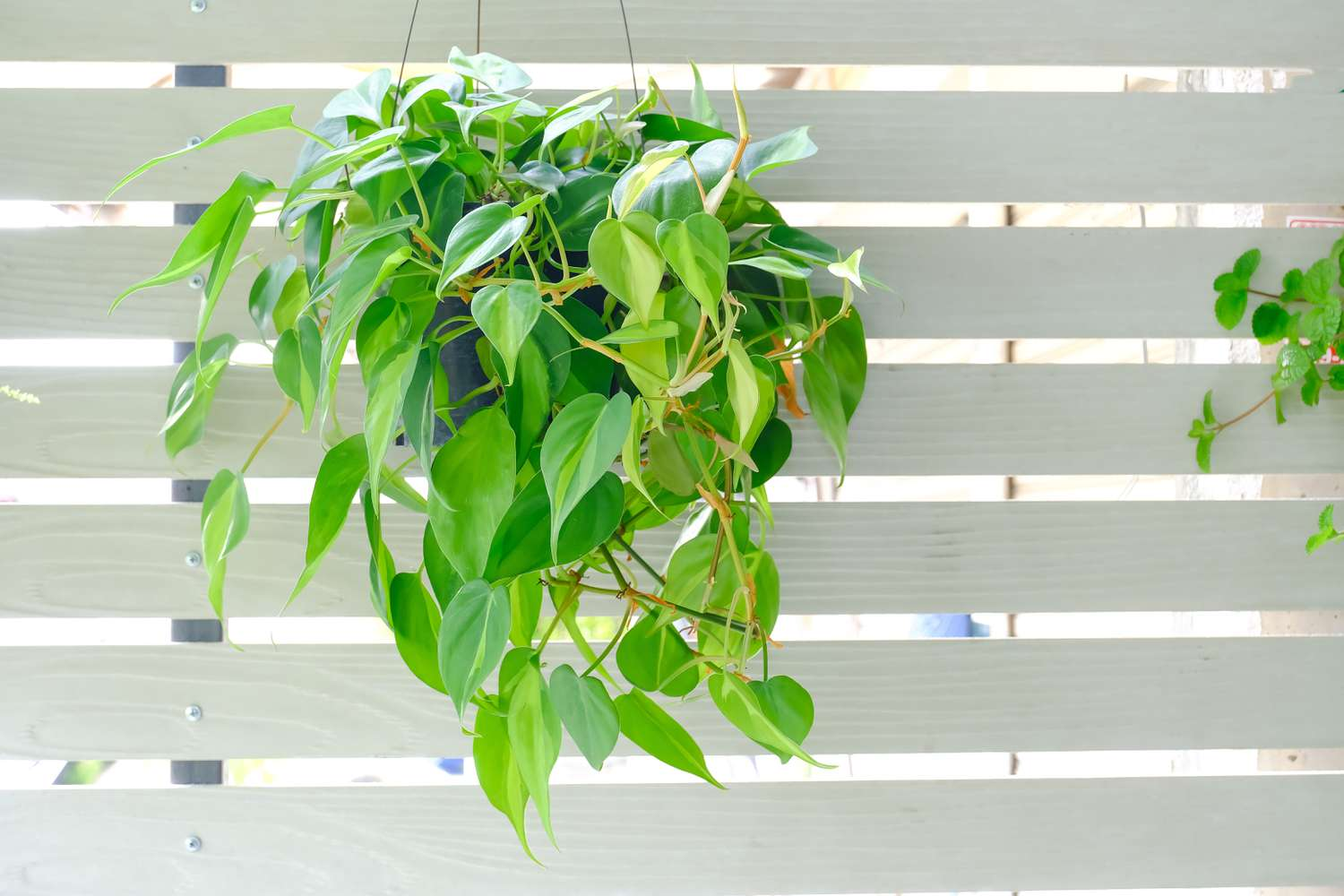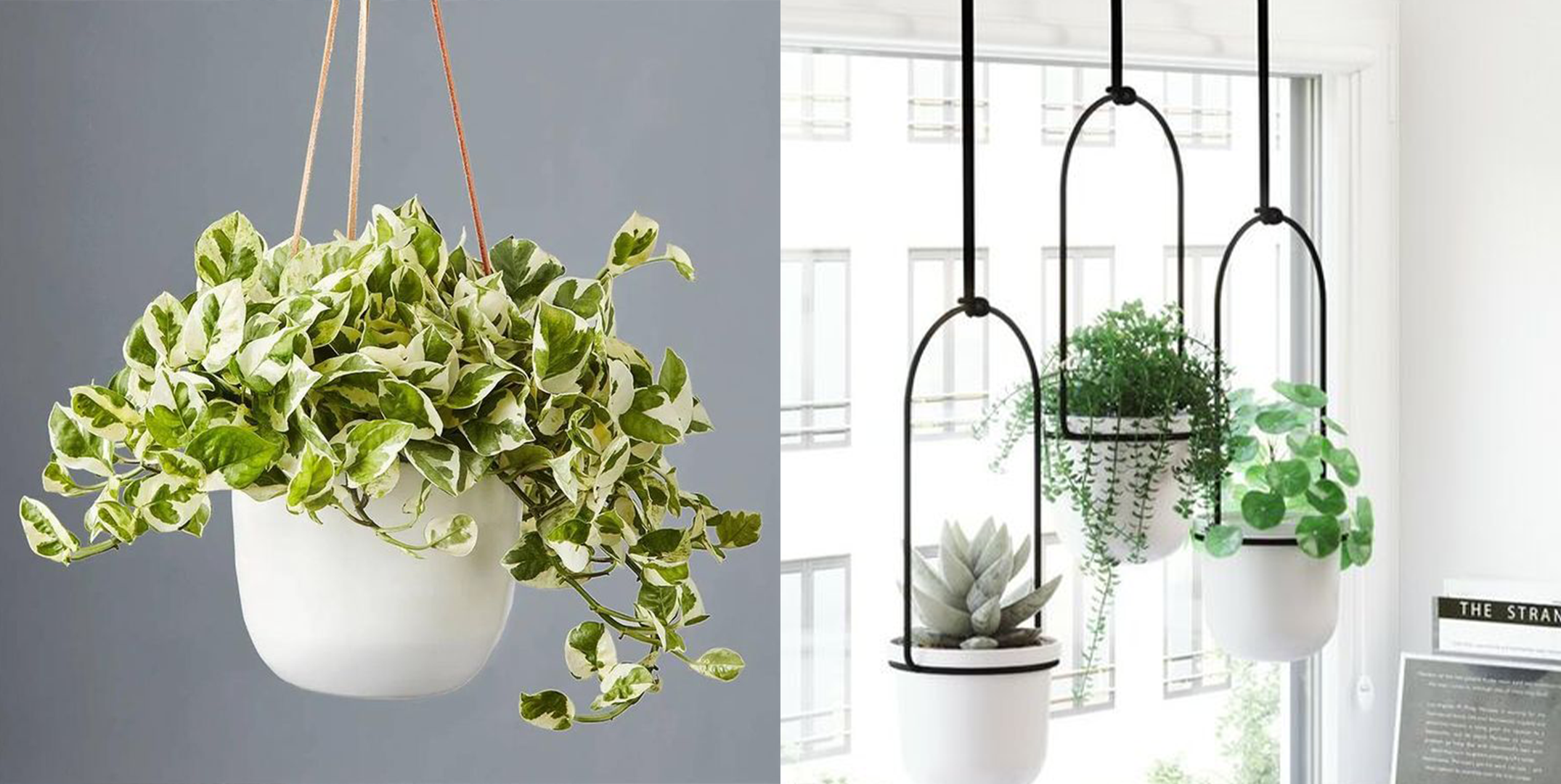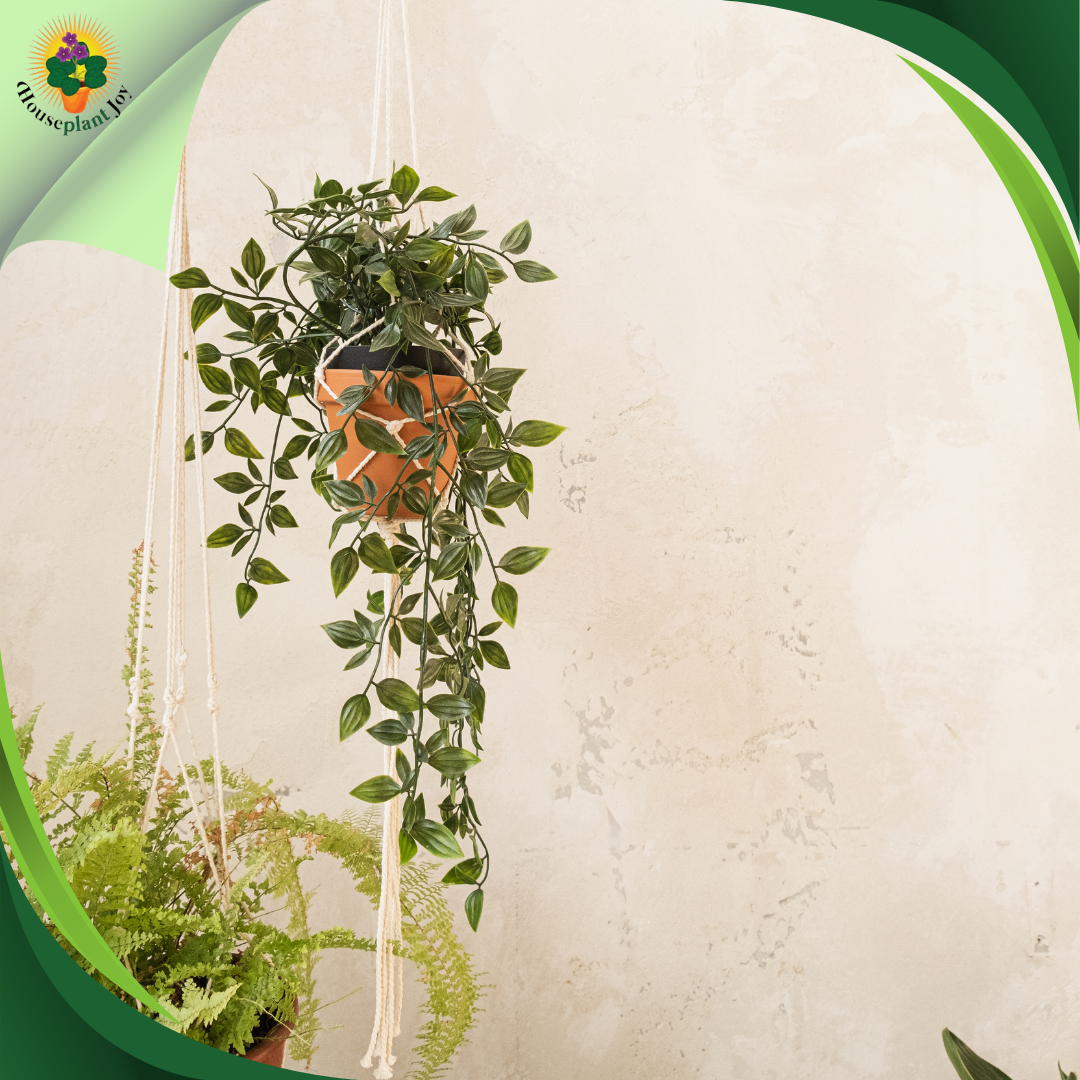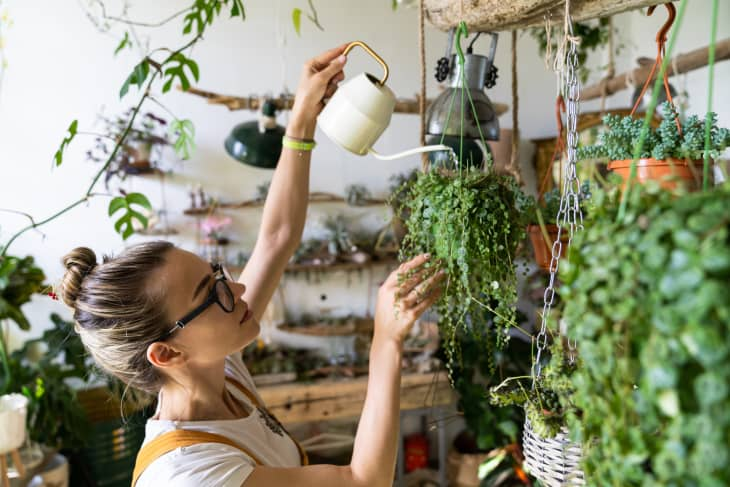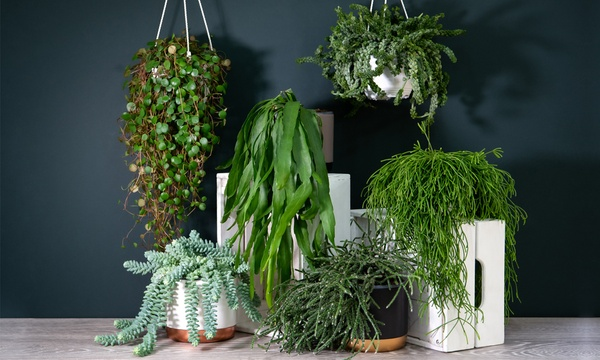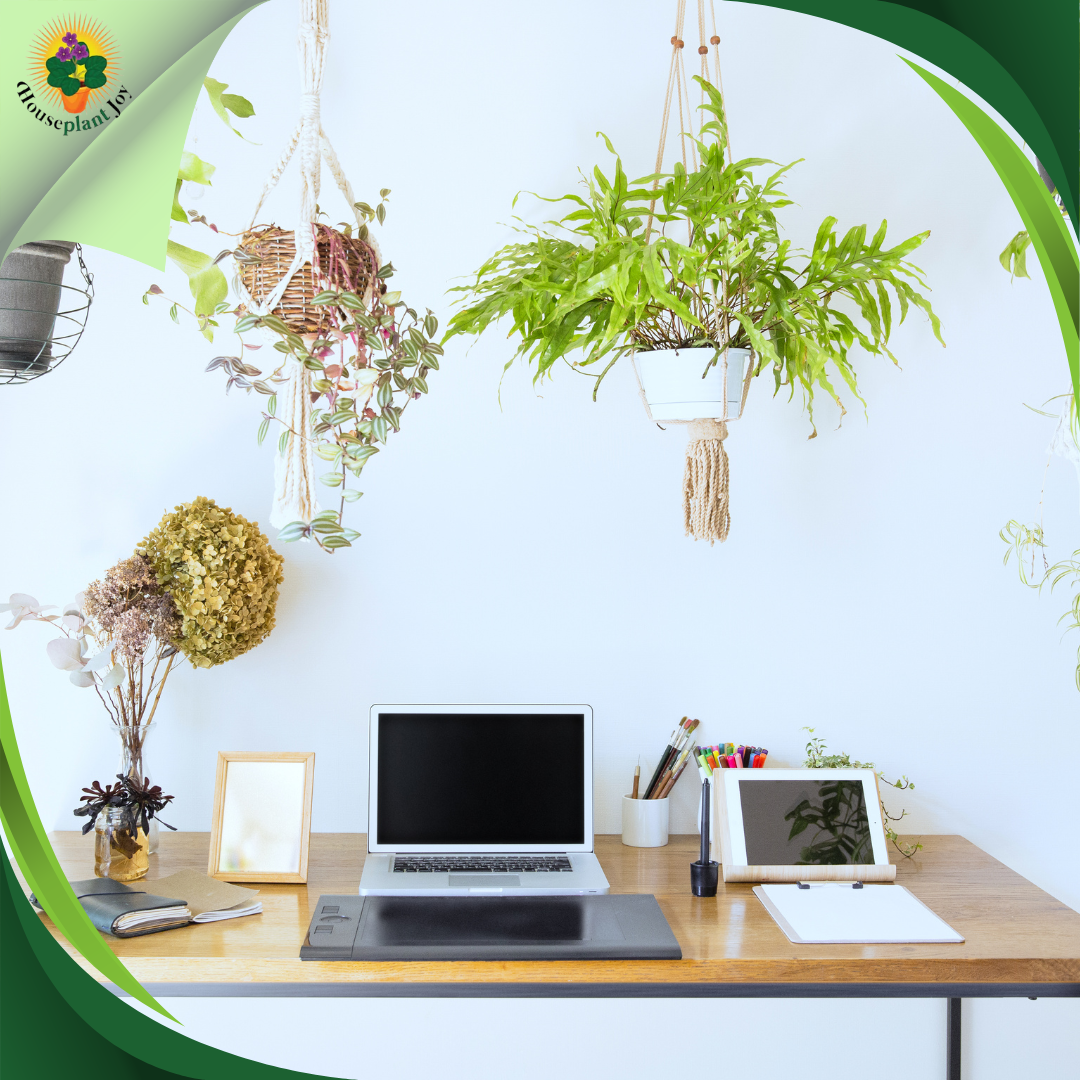HousePlantJoy is supported by our audience. When you purchase through one of our links, we may earn a small affiliate commission. As an Amazon Associate I earn from qualifying purchases. Your cost is not affected.
==================
Have you ever walked into a room and felt instantly refreshed by the greenery around you? Hanging plants might be the secret sauce you’re missing. Whether in a cozy apartment or a spacious house, these beauties in baskets and pots can transform your space, adding a touch of nature and elegance. Let’s dive into the wonderful world of hanging plants and discover how you can elevate your home’s vibe with these charming green companions. Ready to get started? Let’s go!
Hanging Plants in Baskets or Pots: Elevating Your Home with Vertical Greenery
Photo by: Real Simple
Hanging plants in baskets or pots offers an innovative way to beautify your living space, whether indoors or outdoors. Elevating plants off the ground can add dimension to your garden, create visual interest, and use vertical space that would otherwise remain empty.
The charm of a lush hanging basket swinging gently in the breeze or a stylish pot suspended from the ceiling can transform any area into a more inviting and vibrant space.
Selecting the right plants is essential when creating your hanging garden, as not all species thrive in the conditions these elevated planters present. Additionally, the choice between baskets and pots, as well as the installation location, profoundly influences the health and growth of your plants.
Key Takeaways
- Choosing the best plants for your hanging baskets means picking ones that grow well and match your care routine.
- Many plants can thrive in hanging baskets, from Verbena to Geraniums. Making beautiful hanging plant arrangements adds beauty to your space and lets you be creative.
- Picking the right baskets and pots can make your hanging plants stand out in your garden or home.
- Getting the soil and watering right is important for keeping your hanging plants healthy and growing.
Characteristics of Ideal Hanging Plants
Photo by: Real Living
When choosing plants for your hanging baskets, look for ones with trailing or cascading growth habits. These plants create a beautiful spill of foliage and flowers over the basket’s edge, adding a lush, luxurious feel. It’s also important to pick hardy plants that can handle elevated conditions, like more wind and direct sunlight.
Additionally, opt for plants with moderate to low water needs since hanging baskets dry out faster.
Popular Plants for Hanging Baskets
Photo by: The Spruce
Numerous plants fit the bill for thriving in hanging baskets. Here’s the lowdown:
- For a classic choice with a range of colors, the Verbena is known for its vibrant blooms.
- If you desire a plant that adds both greenery and flowers, Fan Flower, or Scaevola, provides trailing foliage with pops of white, pink, or blue blossoms.
- Burro’s Tail offers a distinctive look with vibrant green, cascading stems for those who prefer succulents.
- English ivy is an evergreen, drought-tolerant, and easy-to-care-for choice that drapes beautifully over the sides of baskets.
- Geraniums are favored for their colorful clusters of blooms and upright growth habit, which allows them to grow well in hanging baskets.
Combining Different Plants in One Basket
When you assemble various plants in a single basket, aim for a balance of textures and colors. For the optimum visual impact, incorporate trailing plants like sweet potato vine with vibrant flowers such as Calibrachoa Cabaret Purple and Verbena Aztec Cherry Red .’Add height and contrast with upright species like Snapdragon’ Bells White’, which can provide a stunning backdrop.
Materials and Designs for Hanging Planters
The material of your hanging planter plays a key role in its function and style.
- Metal baskets, with their black or bronze finishes, are sturdy and give a timeless look.
- Wicker or rattan baskets, in contrast, bring a natural, rustic charm.
- If you prefer a modern and sleek vibe, glass or ceramic pots are great.
- Plastic or resin planters, on the other hand, are lightweight, easy on the wallet, and available in many different colors and patterns.
Remember, each material affects moisture retention and temperature regulation differently, essential for keeping your plants healthy.
Selecting the Right Size and Shape
Regarding size and shape, your choice should be guided by the types of plants you wish to display.
- Shallow, Wide Baskets: Perfect for plants with spreading foliage, allowing their leaves to fan out beautifully.
- Deep Pots: Ideal for plants with long, trailing stems, providing ample room for the stems to cascade dramatically.
- Large Pots: Great for creating a stunning visual impact with plants overflowing and cascading over the edges.
- Smaller Baskets: Best for compact spaces or showcasing petite plants, adding a delicate touch to your display.
Always consider your plants’ growing needs, such as root space and room for growth, to ensure they thrive in their new hanging home.
Strategic Setup: Installation and Placement of Hanging Plants
Photo by: Martha Stewart
For hanging plants to thrive, it’s not just about picking the right plants. The hardware you use and where you place your baskets or pots are equally important.
Choosing the proper hardware is crucial for safety and durability. Meanwhile, placing your plants in the right location not only promotes their health but also enhances their appearance.
Choosing the Best Location for Sunlight and Aesthetic
Your plants’ health heavily depends on the amount of light they receive. Position your hanging baskets where they receive the appropriate amount of sunlight specific to their needs. Some plants do well in full sun, while others prefer to have a bit of shade.
Soil and Watering Requirements
Photo by: Cheeky Plant Co.
Getting the soil mix right and nailing down your watering routine is important for keeping your hanging plants healthy and thriving. These elements ensure your plants receive the nutrition and hydration they require without the risk of disease or drought.
Best Soil Mixtures for Hanging Planters
For your hanging planters, a quality soil mix specifically designed for container gardening is essential. It must be rich in nutrients, well-aerated, and have good drainage to prevent waterlogging.
Consider using a blend of peat moss, vermiculite, and compost in equal parts to foster strong plant growth and retain moisture.
Alternatively, a soilless potting mix can be advantageous for certain types of plants or hanging baskets, offering lightweight, excellent drainage and a reduced risk of soil-borne diseases.
Watering Techniques for Hanging Baskets
When watering your hanging baskets, it’s important to be consistent. Ensure your plants are watered whenever the top to two inches of soil feels dry.
You can either water from the top or use a soaking method in which the basket is submerged in a water bath, allowing the roots to absorb moisture thoroughly.
Both methods are effective, but you must adjust frequency and method based on environmental conditions like heat, wind, and the size of your hanging basket. Finding the right balance with watering is important because overwatering can be just as harmful as underwatering.
Ongoing Care and Maintenance for Hanging Plants
Photo by: Apartment Therapy
Regular pruning, fertilization, and pest management are essential to ensuring your hanging plants remain vibrant and healthy. By integrating these practices into your regular care routine, you can ensure your plants maintain their visual appeal and remain healthy for a long time.
Pruning and Deadheading
Pruning is critical for promoting growth and maintaining the shape of your hanging plants, as well as regularly pruning away dead or yellowing leaves.
Deadheading, or the removal of spent flowers, stimulates blooming in flowering species. Trim back overgrown branches to keep your plant tidy and improve air circulation.
Fertilizing Hanging Plants
Your hanging plants need a steady supply of nutrients to thrive. Apply a well-balanced fertilizer throughout their growing season.
If you have flowering plants, opt for a fertilizer with a higher middle number. It contains more phosphorus, which is crucial for bloom production.
Summer Tips for Thriving Hanging Baskets
During summer, ensure your hanging baskets are watered frequently as they dry out faster, especially in hot weather. Use a lightweight, well-draining potting mix, and consider adding a water-retaining gel to the soil to help maintain moisture levels. Regular deadheading and weekly fertilization with a balanced formula will keep your plants in peak condition.
Enhancing Your Space with Hanging Plants in Baskets and Pots
Hanging plants in baskets and pots offered a versatile and beautiful way to elevate your living space. Whether you want to create a cozy atmosphere indoors or enhance your garden’s charm outdoors, these green companions could transform any area with their natural elegance.
By picking the right plants and planters and considering how they grow and what they need, you could make gorgeous displays that add beauty and practical benefits. Putting them in the right place, setting them up properly, and taking good care of them were key to keeping your hanging plants healthy and looking good.
Remembering to prune, fertilize, and manage pests regularly helped keep the plants vibrant and flourishing throughout the year. Following these guidelines and adapting the care routine to seasonal changes, you could enjoy the beauty of planting plants in baskets and pots year-round.
So, whether you are starting or looking to expand your collection, let the charm of hanging plants enhance your home’s ambiance and bring a touch of nature indoors. Ready to get started? Let’s bring some greenery into your space!
What Are the Best Plants for Outdoor Hanging Baskets or Pots?
How Do I Properly Maintain Indoor Hanging Planters?
Indoor hanging planters require a watchful eye on moisture levels, especially in hot weather. They also necessitate regular watering and adequate exposure to light. Also, it’s vital to remove spent blooms and dead leaves to promote healthy growth and blooming.
Is It Possible to Convert a Regular Basket Into a Planter for Hanging?
Yes, you can convert a regular basket into a hanging planter by lining it with moss or similar material to hold the soil, then adding proper drainage and securing it with stable chains or rope.
Why Should You Join Us?
Get insider secrets: Unearth the best-kept tips to keep your plants thriving and blooming like never before.
Expert Advice: Gain access to our team on Facebook, Twitter, and other social media channels, and meet our gardening experts eager to help you on your plant journey.
Engage With Like-Minded Souls: Connect with fellow plant lovers, exchange stories, and build a supportive community. Join us today! Follow Houseplant Joy on Facebook, Instagram, and Twitter for daily inspiration and a blooming good time! #HouseplantJoy #GreenThumbsUnite #HouseplantLove

